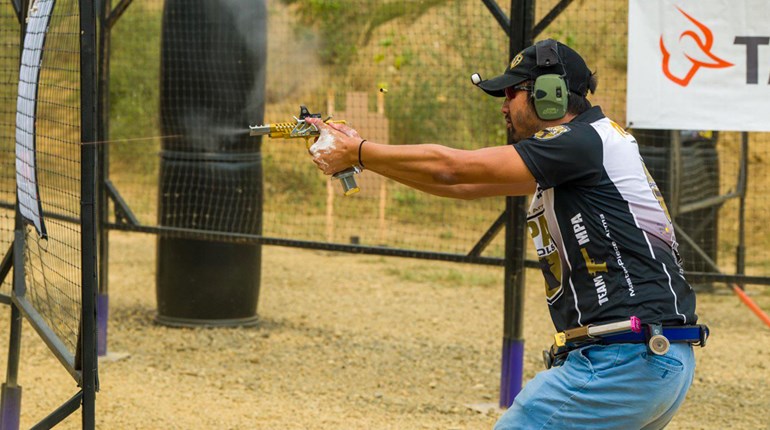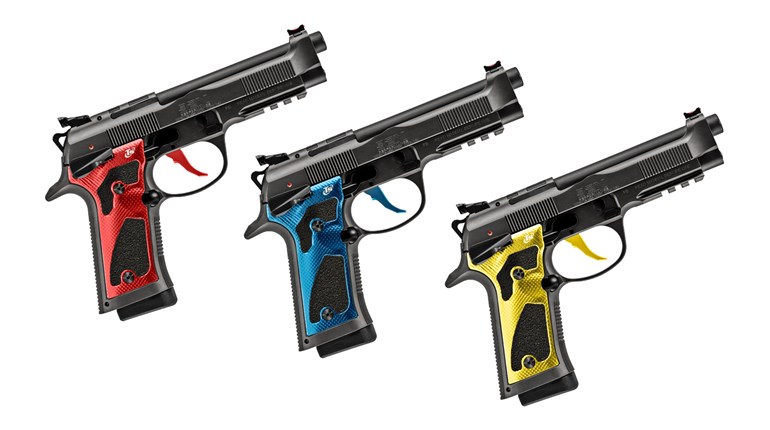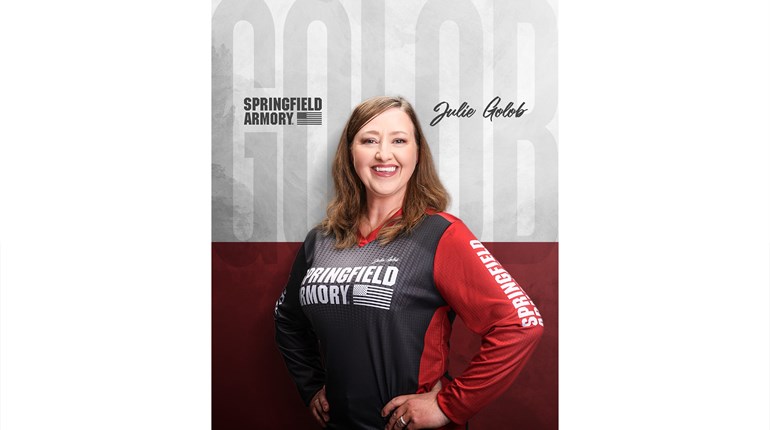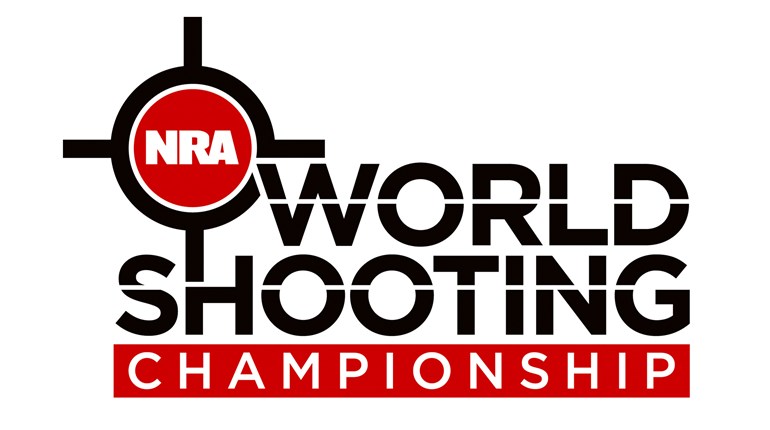
After joining USPSA in 2003, I became a Range Officer in 2005. Since then, I have been working major matches, mostly State, Section and Area matches around the Virginia and Maryland area (I live in Maryland), but also the occasional matches in Pennsylvania or Delaware. I have always enjoyed working matches and I’ve met lots of people doing it over the years. I don’t even consider it work at all. For me, working matches, as much as shooting matches, is part of the hobby I love. Practice helps you get better at shooting, and working matches helps you hone your skills and become a better Range Officer.

In 2019 I decided to expand my horizons and starting working at the USPSA Nationals. While working the Race Gun Nationals in Frostproof in 2020, I had the crazy idea to try to work all the USPSA Area matches in 2021. There have always been matches that I wanted to go to, but for many reasons I never got the opportunity. For years the Area 3 match had notoriety as a “carnival” match. Some use the term in a derogatory fashion, but considering the hundreds of matches I’ve shot over the years, I actually look forward to matches that have interesting elements, like some of the things Area 3 has done over the years. And most USPSA members consider the Phoenix, Arizona, area to be the Mecca of action shooting, so Area 2 has always been on my match wish list.
Once I got home from Nationals, I started reaching out to Match Directors to try to get on the staff for each match. I was able to get in seven of the matches as staff without any issues. Area 1 was toughest to get into, as they already had a wait list for staff in November. Finally in February with no movement on the wait list I decided to register and pay as a regular competitor. If I couldn’t work all the Area matches, at least I’d go to them all.
The first Area match of 2021 arrived in April—Area 6 in Salisbury, North Carolina, a 400-mile trip from home. Match Director Donna Webb and Range Master Paul Hernandez did a great job making everyone feel welcome; it turned out that Donna is also from Maryland and attended the rival high school to the one I attended. It’s a small world. The most memorable part of the match was the staff dinner, as they gave away more guns to staff than at any match I have ever worked.
After I got home from Area 6, Area 1 Co-Match Director Tessina Hurley asked if I was still interested in working the Area 1 match. I happily agreed to staff the match and she made all the necessary changes, and issued a refund of the match fee that I had paid earlier. My plan to work all of the Area matches was back on.

Next up was the Area 7 match in Dunbarton, New Hampshire, in June. The drive through New York City turned the trip into a more than a nine-hour trip, but it was definitely worth the drive. Area 7 staffs their match differently than most Area matches; they have the clubs in Area 7 design, build and staff the various stages in the match. Match Director Devin McManus, one of the friendliest people you will meet in competitive shooting, helped get me into the match as staff with the Vermont crew that was in need of an additional staff member. The staff dinner took place the evening before the match started and featured delicious BBQ chicken, with ice cream and brownies for dessert (basically all you can eat or take with you). And while I was in New Hampshire, I had my first lobster roll for dinner one night; it was so good we went back the next night.
My next trip was a double-header, with the Area 3 match at the end of July, followed by the Area 1 match the first week in August. I made the 1,300-mile drive to Grand Island, Nebraska, over two days and arrived at the range the day before the match started, just as the build staff finished up. I’d seen hundreds of videos of this range on YouTube, so although it was my first time at Heartland Public Shooting Club, everything seemed familiar. The match included 40- yard mini-poppers, a painful (for me) triple swinger and an interesting stage with cars all over the bay. This was the final time Sherwyn Greenfield and Chris Davies would be running USPSA Area 3 together as Match Directors, so I was glad I finally made the trip. I left Grand Island before the prize ceremony started, heading towards the Area 1 match.

The trip from Nebraska to South Hill, Washington was 1,600 miles and took two days. I arrived at the Paul Bunyan Rifle and Sportsman’s Club on Tuesday in time to check out some of the stages (the two-day staff match was to start on Wednesday). I loved the giant statue of Paul Bunyan near the club’s entrance. The match featured one of the neatest stages I have ever shot, Stage 7 Send It, which was fired seated from a well-constructed roller coaster. If you haven’t seen any videos of this stage, head to YouTube to find some. Once again, I left the match before the prize ceremony to get a head start on my 2,800-mile trip home, which ended up being 40 hours of driving.
Twelve days after getting home from Area 1, I made the short drive to Shadow Hawk in West Virginia to begin setup for the 2021 USPSA Area 8 match, which was held the last week of August. The number one thing I remember about this match was the heat (the temperature was probably close to 100 degrees every day). The cheesecake eating contest I had with Hunter Clarke came in a close second. I can’t beat the kid in shooting anymore, so I was happy to beat him in eating. Although the heat was oppressive, I worked the chrono stage, which was nicely located in a wooded, shaded area, so after setup and staff day I got some relief from the heat. Kudos to all the other staff who braved the heat for the entire match. The staff dinner on the range was catered by Southern Bobby-Q, a fixture at matches in the region which was also on hand for the USPSA Area 6 match earlier in the year. Nobody left that dinner hungry. After the match and teardown were complete, I was happy to have only a two-hour drive home.

The Area 5 match was two weeks after Area 8 at the Bluegrass Sportsmen’s League in Wilmore, Kentucky, on the second weekend in September. I had been to that range the prior year for the Kentucky Section match and I was happy to be invited back to work for Match Director Lafe Kunkel again at Area 5. Arriving a day early, I helped the Director of the National Range Officers Institute, Troy McManus, hang targets and get things finalized for staff day. This was another hot match, especially on Friday when the staff shot. The staff dinner included some amazing food and was emceed by the ever-bubbly Tess Nash, who made the event a lot of fun. After the match was over and we finished tearing down our stage I hit the road for the nine-hour drive home.

I was home for nine days before starting the 19-hour drive to Tulsa, Oklahoma, for the Area 4 match, which was held at the United States Shooting Academy, one of my favorite ranges in the country. Match Director Chad Stanton set up some fun, yet challenging stages on the grass bays of USSA. I got to shoot on staff day with Troy McManus and Ray Hirst, two long-time Range Master Instructors who everyone seems to know. Chad arranged the schedule so that Sunday was only a half-day of shooting; after teardown I was able to get on the road early for the long drive home.
The final match of my 2021 USPSA Area tour was the Area 2 match, held at the Rio Salado Sportsman’s Club the second week in November. I made the 2,300-mile drive over two days. The weather had started to turn cold in Maryland so the 80- to 90-degree temperatures and beautiful sunshine in Arizona were a welcome change. The range and the match were everything I had hoped they’d be, after 18 years of wanting to get to this match. I was in no hurry on my trip home, as I had the entire following week off work. I took a brief trip to the Grand Canyon on Monday before starting the trip east the next day. The trip home also included a stop at the world famous Big Texan Steak Ranch in Amarillo, Texas, where I conquered the 72-ounce steak challenge (earlier in the year at Area 3 I failed on a similar, but smaller, 64-ounce steak challenge). I was prepared this time.

Eight matches, 18,000 miles—and I loved every minute of it. Overall, this was a tremendous experience and 2021 was the most enjoyable year I’ve had in USPSA. I had a great time driving to these matches, seeing our great country and meeting so many people who put their hearts and souls into designing, building, running and working USPSA matches.
Article from the March/April 2022 issue of USPSA’s magazine.



































